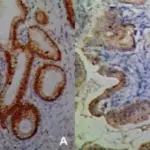Cholecystitis is inflammation of the gallbladder wall.
Examples of cholecystitis include:
- Acute cholecystitis
- Chronic cholecystitis
What is Acute Cholecystitis?
Acute cholecystitis is the abrupt destructive process of the gallbladder.
What is the Pathology of Acute Cholecystitis?
The pathology of acute cholecystitis is:
-Etiology: The cause of acute cholecystitis are stones are physically blocking of the cystic duct.
-Pathogenesis: The sequence of events that lead to acute calculous cholecystitis is the blockage of the neck or cystic duct typically by gallstones or biliary sludge.
-Morphology: The morphology associated with acute cholecystitis shows gallbladder wall thickening and pericholecystic fluid seen on transabdominal ultrasound.
-Histology: The histology associated with acute cholecystitis shows the erosion of mucosa, edema, myofibroblasts, lymphocytes, plasma cells, eosinophils, pigment-laden macrophages, and fibrin.
How does Acute Cholecystitis Present?
Patients with acute cholecystitis typically are female present at the age range of over 30 years old. The symptoms, features, and clinical findings associated with acute cholecystitis include classic symptoms, such as right upper quadrant pain, nausea, vomiting, anorexia, and fever.
How is Acute Cholecystitis Diagnosed?
Acute cholecystitis is diagnosed with a combination of history, physical, laboratory, and imaging findings. The imaging findings include transabdominal ultrasound and cholescintigraphy.
How is Acute Cholecystitis Treated?
Acute cholecystitis is treated with antibiotics, and cholecystectomy.
What is the Prognosis of Acute Cholecystitis?
The prognosis of acute cholecystitis is fair.



